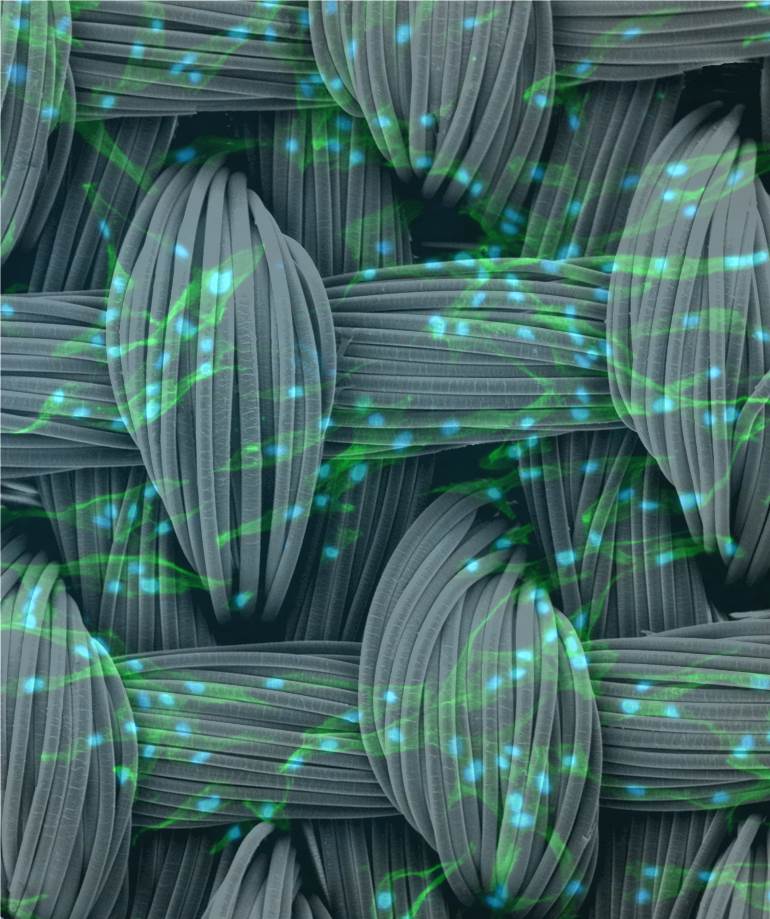Future Wow
Star Trek really did foretell much of the technology we use today. The fertile imagination of Gene Roddenberry and his writing team gave us many ideas for technologies that we now use or will in the near future.
 Future Wow
Future Wow
Star Trek really did foretell much of the technology we use today. The fertile imagination of Gene Roddenberry and his writing team gave us many ideas for technologies that we now use or will in the near future.
By Avi Roy, University of Buckingham and Sven Bulterijs, Yale University
The complexity in biology is astounding. That is why biologists are thankful that model organisms, like the roundworm Caenorhabditis elegans, can be used to breakdown biological processes into simpler units.
C. elegans is a particular favourite. It grows in the exact same way from a single fertilised egg cell to 959 cells as an adult. Its body is transparent which has allowed scientists to map its growth and study internal changes to great detail.
In a paper published in Nature recently, En-Zhi Shen at the National Institute of Biological Sciences in Beijing and colleagues have used C. elegans to make an intriguing discovery. Based on a process that occurs in each cell’s power house, mitochondria, they claim to be able to predict the lifespan of that organism.
Continue reading “Predicting lifespan in a flash … at least in worms” »
LIST OF UPDATES (FEBRUARY 24 THROUGH MARCH 02/2014). By Mr. Andres Agostini at The Future of Scientific Management, Today! At http://lnkd.in/bYP2nDC
Brain signals from a primate directly move paralyzed limbs in another primate ‘avatar’
http://www.kurzweilai.net/brain-signals-from-a-primate-direc…ate-avatar
Rice’s carbon nanotube fibers outperform copper
http://www.kurzweilai.net/rices-carbon-nanotube-fibers-outperform-copper
Single-chip device to provide real-time ultrasonic 3D images from inside the heart and blood vessels
http://www.kurzweilai.net/single-chip-device-to-provide-real…od-vessels
Continue reading “The Future of Scientific Management, Today!” »

For a glimpse at the future of human-robot interactions, it might be better to look at what’s happening in the United States military than analysing Her, in which Joaquin Phoenix’s character falls in love with an OS voiced by Scarlett Johansson.
Throughout every department of the US armed forces, autonomous robots are playing a larger role in every aspect of warfare than ever before, and soldiers are developing some unorthodox relationships with their machines.
Just ask Danielle.
Kurzweil.net

By combining a synthetic scaffolding material with gene delivery techniques to direct stem cells into becoming new cartilage, Duke University researchers are getting closer to being able to generate replacement cartilage where it’s needed in the body.
Performing tissue repair with stem cells typically requires applying copious amounts of growth factor proteins — a task that is very expensive and becomes challenging once the developing material is implanted within a body.
In a new study, however, Duke researchers found a way around this limitation by genetically altering the stem cells to make the necessary growth factors all on their own.
By Phil Wahba — Reuters

(Reuters) — Robocoin said on Tuesday that later this month it will install the first automated teller machines in the United States that let users buy and sell bitcoin, the latest step into the mainstream for the digital currency.
The kiosks, to be installed in Seattle, and Austin, Texas, are similar to ATMs but have scanners to read government-issued identification such as a driver’s license or a passport to confirm users’ identities.
The ATMs will allow people to swap bitcoin for cash, or deposit cash to buy more bitcoin by transferring funds to or from a virtual wallet on their smartphones.

Although the world of 3D printing is hurtling through milestones at the moment, to a large extent the technology still remains in its infancy. If you thought it was all Etsy jewellery and plastic toys, though, think again. Joris Laarman has created a free-standing 3D printing robot that creates beautiful metal sculptures with the graceful brush strokes of an artist.

Is it time to push the "up" button on the space elevator?
A space elevator consisting of an Earth-anchored tether that extends 62,000 miles (100,000 kilometers) into space could eventually provide routine, safe, inexpensive and quiet access to orbit, some researchers say.
Kurzweilai.net
 Hello Ray,
Hello Ray,
I finished reading your book not long ago, and I had a question regarding your opinion of molecular assemblers.
Suppose molecular assemblers are indeed proven to be feasible on a large scale and we are given an infinite abundance to produce as much as we want — limited only by the amount of matter in our vicinity — with minimal effort.
If this scenario comes to fruition, how will humans be able to cope with the lack of challenges in their lives? It seems like with assemblers there will be very little incentive to do anything.
Since everything could be obtained effortlessly through assemblers, there appears to be little purpose to hold a job, since all possessions could be obtained for free.
By Cheryl Pellerin — American Forces Press Service

WASHINGTON, Feb. 14, 2014 – During a winter weekend in Pittsburgh, more than 50 cadets and midshipmen from three service academies sat elbow to elbow at nine round tables in a packed room. They’d been training since November to compete in a pilot program of the Defense Advanced Research Projects Agency called the Service Academy Cyber Stakes.
Competitors at the Jan. 30-Feb. 2 event ranged from freshmen to seniors, 18 to 24 years old, from the U.S. Military Academy in West Point, N.Y., the U.S. Naval Academy in Annapolis, Md., and the U.S. Air Force Academy in Colorado Springs, Colo.
DARPA officials said the Defense Department must train 4,000 cybersecurity experts by 2017. Meeting that goal requires building a pipeline for training and education, especially for future officers who will oversee protection of the cyber domain. DARPA had two requirements for the competition: impact to the warfighter and innovation.
